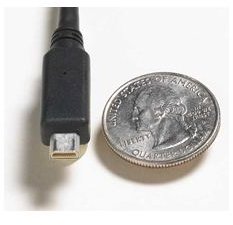HDMI Cable Connecting Options Version 1.4 Specification
HDMI Standard Specification
HDMI, which stands for High Definition Multimedia Interface, is a specification for connecting various electronic devices and components together. Compliance with the HDMI standard is enforced via trademark registration and licensing requirements to use the term HDMI or any HDMI logo on a device or cable. The HDMI specification is managed by the HDMI Licensing group, who recently released version 1.4 of the HDMI specification.
The HDMI specification was originally proposed as a way to offer easier high-performance connections between high-end electronics. Ironically, each new version has increased the number of cables and connectors available, which in turn increases the complexity.
HDMI Connectors
With the new 1.4 specification, there are now four different HDMI connectors. The available connectors are: Type A, Type B, Type C, and Type D. Sounds simple enough, but unfortunately, both Type C and Type D cables have more consumer friendly names, miniconnector, and microconnector, respectively. There is also a new “automotive connection system” for use in vehicles, which will be known as Type E. This connector will allow for connections to be secured or “locked” into place to avoid shaking loose while driving.
Both Type A and Type B connectors were defined in the original 1.0 specification. Type C connectors were defined in the 1.3 specification, and Type D connectors are new to the 1.4 HDMI specification.
Most products manufactured today use either Type A connectors or Type C connectors. Type B connectors are rare and not commonly seen in most consumer electronics. Consumers will theoretically never use type E connectors. There are no Type D connectors today because the specification that created them was only recently released. However, the new Type D “microconnectors” seem destined to make Type C “miniconnectors” obsolete.
All four HDMI consumer connectors support all 19 pins of the HDMI specification, and thus support all of its features. However, the new features incorporated into HDMI 1.4, including Ethernet connectivity, will only be supported by version 1.4 cables and connectors.
Choosing which type of connection to use is a matter of matching up the cable connector to the port on the device being connected. Smaller devices are more likely to use the miniconnector and soon the microconnector. Standard sized home theater equipment is most likely to use the Type A connector.
While it may seem overly complicated, a home theater package connected entirely via HDMI requires far less cabling than if you used a different type of connection. Once a system is connected, it should be all set, that is, until they update the specification again.
